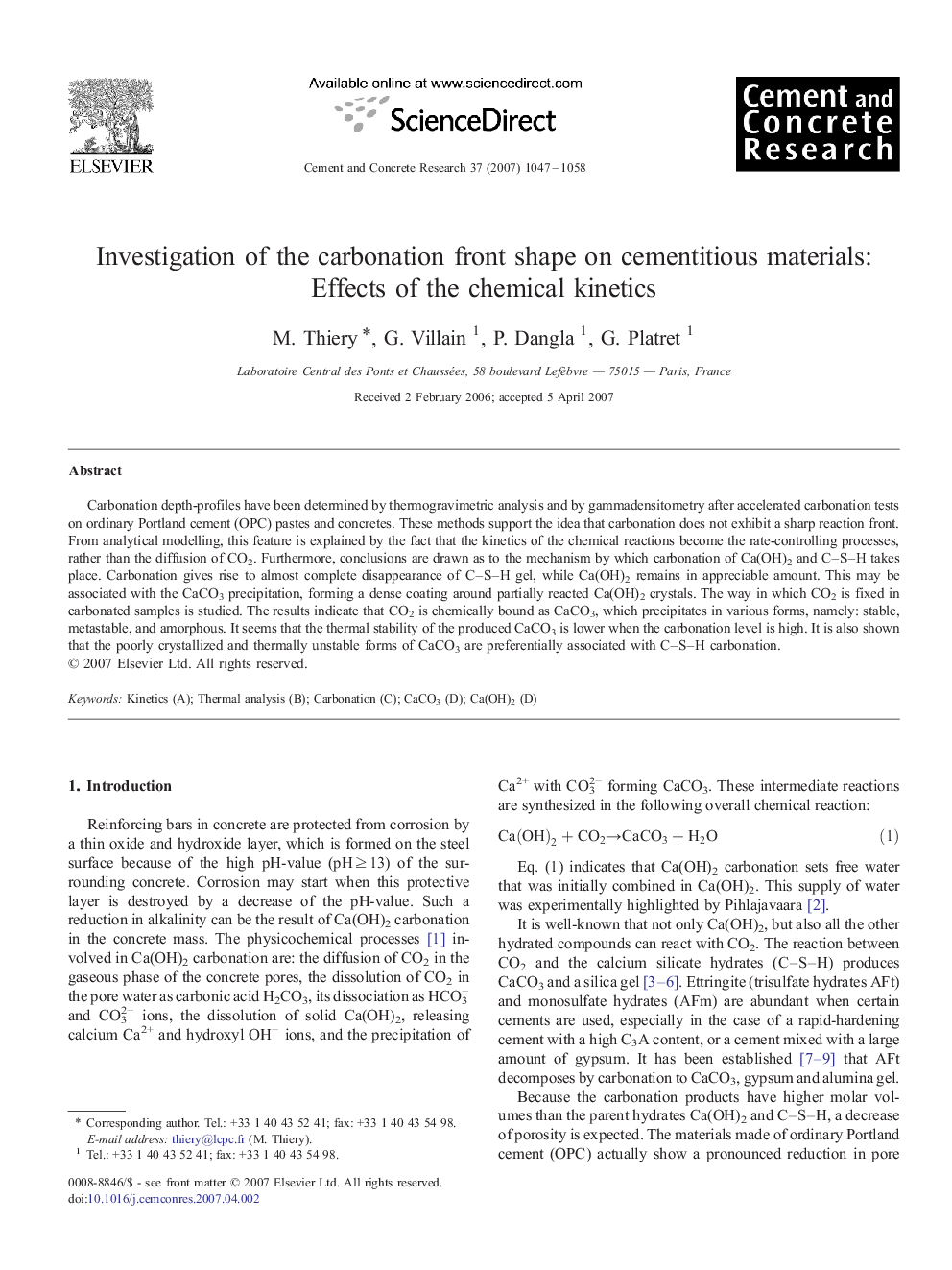| Article ID | Journal | Published Year | Pages | File Type |
|---|---|---|---|---|
| 1457751 | Cement and Concrete Research | 2007 | 12 Pages |
Carbonation depth-profiles have been determined by thermogravimetric analysis and by gammadensitometry after accelerated carbonation tests on ordinary Portland cement (OPC) pastes and concretes. These methods support the idea that carbonation does not exhibit a sharp reaction front. From analytical modelling, this feature is explained by the fact that the kinetics of the chemical reactions become the rate-controlling processes, rather than the diffusion of CO2. Furthermore, conclusions are drawn as to the mechanism by which carbonation of Ca(OH)2 and C–S–H takes place. Carbonation gives rise to almost complete disappearance of C–S–H gel, while Ca(OH)2 remains in appreciable amount. This may be associated with the CaCO3 precipitation, forming a dense coating around partially reacted Ca(OH)2 crystals. The way in which CO2 is fixed in carbonated samples is studied. The results indicate that CO2 is chemically bound as CaCO3, which precipitates in various forms, namely: stable, metastable, and amorphous. It seems that the thermal stability of the produced CaCO3 is lower when the carbonation level is high. It is also shown that the poorly crystallized and thermally unstable forms of CaCO3 are preferentially associated with C–S–H carbonation.
